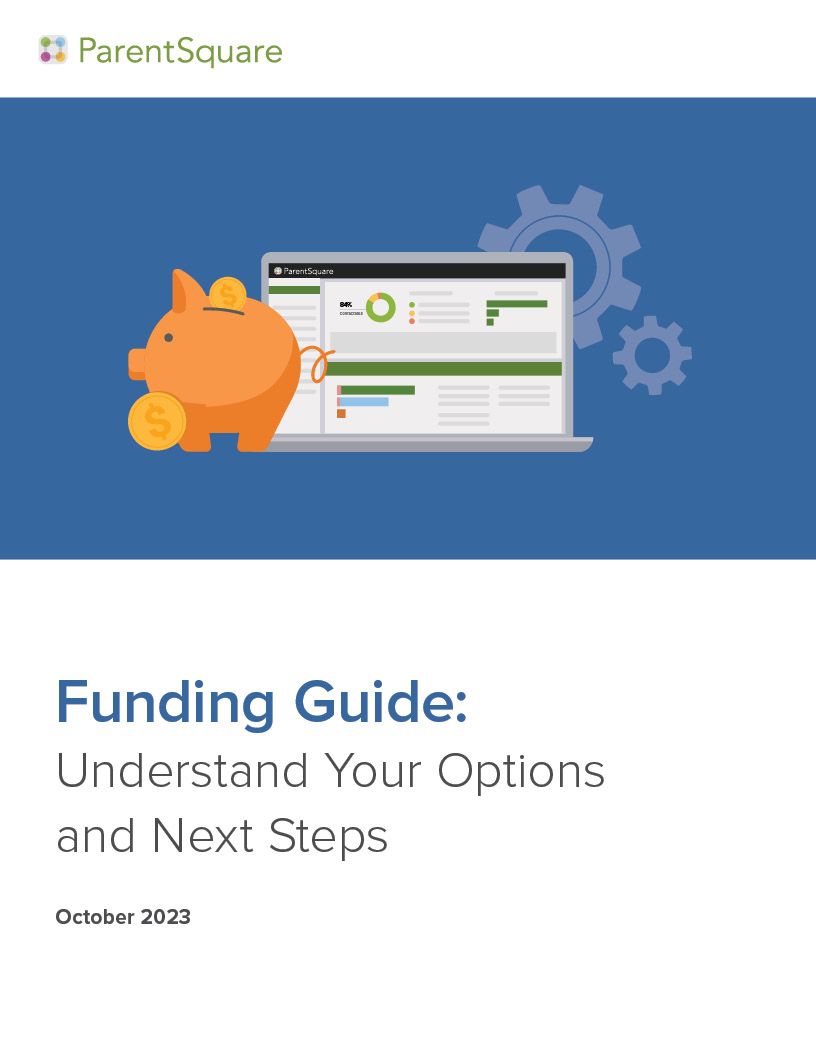What’s ahead for school-home communications this year? We recently spoke with Ashton Brellenthin, communications coordinator at Danville Community School Corporation (IN), Brian Burke, executive director of communications, community partnerships, and strategic planning at Bristol Public Schools (CT), and Stacia Harris, director of communications at Buncombe Co. Schools (NC) and NCSPRA vice president.

Here are some of the trends these communications leaders highlighted, from messaging fatigue to the double-edged sword of social media.
What are some of the communications challenges your district faced in 2021, and how do you hope to address those challenges in 2022?
Brian noted that families in his district are experiencing communication fatigue due to the pandemic. To ensure that schools continue to send relevant information and maintain family attention, one of his communications goals is to find ways to get families to engage with messages that aren’t pandemic-related by highlighting the positive things happening in his district.
For Stacia, one of the biggest challenges has been how quickly national conversations can affect stakeholders — including families, teachers, and the community as a whole — and their response to decisions made by the district. Looking forward, this means finding ways to anticipate those responses and communicate the reasoning for decisions that are being made to minimize panic and fortify trust in the school community.
Ashton’s district has found it challenging to find a balance between fast and accurate communications and student privacy — especially in response to pandemic-oriented communications like contact tracing and quarantine announcements. Her district is looking to find a way to get communications out quickly and efficiently while still being sensitive to the privacy of the students and families involved.
In terms of school communications, what is important for your district to focus on in 2022?
One of Stacia’s priorities this year is finding the best way to improve parent engagement by determining how families want information delivered to them and opening up easy ways for parents to provide feedback to the district. She noted that a communications audit can be helpful to specifically identify how effective a district’s communications are currently before building out your district’s communications strategy further.

“One thing that we’ve realized. . .is its really helpful to have folks who can take the larger district messages and make sure they’re being reinforced and really distilled down to make sense for their school building and for their individual stakeholders”
—Stacia Harris, director of communications at Buncombe Co. Schools
Ashton and Brian both mentioned that consistency of feedback and communication needs to continue to keep families and teachers connected. It’s important to reach out to the community with a focus on sharing the highlights and positive messages that continuously motivate families to engage with the district’s communications efforts.
How does your district utilize social media as a part of your communications strategy, and how does your school community engage through these channels?

Ashton’s district has made a commitment to maintaining social media as a celebration space for positivity and connection, rather than having parents go there to find policy information. This way, families can go to social media to engage, connect, and have conversations, while policy information is available through ParentSquare.
Families can also provide feedback directly through the communication platform, where administrators are able to engage in a more meaningful way. This ensures that policy information is not up for conversation or debate publicly by people who are not connected to the school community in any way, so families know that they can expect a safe space on their schools’ social media page.
Stacia noted that social media has been helpful to have a far-reaching effect on what schools are trying to communicate. In her experience, leaning more on positive news on social media has been key to maintaining productive conversations and family feedback. She also suggested that schools create social media guidelines to establish consistency and clarity in social media messaging and to ensure that your communications team is aware of stakeholders’ expectations and how national trends and conversations may activate community members in a negative way on social media.
Ashton’s district has made a commitment to maintaining social media as a celebration space for positivity and connection, rather than having parents go there to find policy information. This way, families can go to social media to engage, connect, and have conversations, while policy information is available through ParentSquare.

What are some of the challenges you face with social media messaging, and how does your school address these challenges?
All of the panelists noted that no matter how hard schools try to create a positive space on social media, these channels can really pull in some negative reactions. Algorithms reward those who comment the most on social media, so the negative comments are often highlighted while the positive comments get lost.
address this, Brian’s district utilizes support services that help highlight relevant comments and social media engagement rather than the more sensational interactions with the district’s content. Stacia suggested a restructuring of social media to avoid the negative back-and-forth that so often occurs on these channels.
In 2022 and into the future, how would you like to see your district’s communications change?
For Stacia, the ideal change that would happen in her district’s communications would be to find ways to clarify messages to ensure parents understand them perfectly from the start. Her top priority is communicating the reasoning — the ‘why’ decisions are being made — before those messages get buried by outside messaging, such as that on social media. Ultimately, the most important message is around the safety of the school community.
Ashton would like to find a way to bridge the engagement gap created by the pandemic. With school community members not being able to gather in person during the pandemic, families have become disengaged, which has created a gap in connection. In the future, Ashton hopes to find ways to re-engage families to rebuild trust and community again.
Brian hopes to see more video for communications in the future, although this may be an ongoing goal for schools as they build this strategy into their communications. Video brings in a more human element, and the context of tone and voice ensure that the intent of messages is communicated more clearly.

“The virtual realm, which I think is here to stay — in every industry, in every organization — has really opened up the flexibility to communicate with our families” — Brian Burke, executive director of communications, community partnerships, and strategic planning at Bristol Public Schools
All of the communications leaders noted that with the implementation of ParentSquare, they have a key resource to ensure their communication strategy evolves along with the needs of their school community. To view the conversation in its entirety, check out the webinar recording here.







